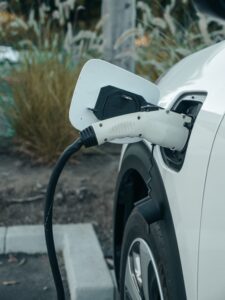APPLICATIONS OF TECHNOLOGY:
- Electric vehicles
- Solid State Batteries
BENEFITS:
- Avoids or minimizes direct contact between carbon and solid electrolyte in the cathode composite while making a good contact between cathode active material and carbon.
- Exhibits improved cycling stability (longevity) and rate capability (fast charging) of the solid-state batteries.
BACKGROUND:
In conventional Li-ion batteries, a conductive carbon coating is applied to the cathode active materials to increase their electronic conductivity. In solid-state batteries, when carbon (e.g., carbon nanofibers and amorphous carbon) is randomly mixed with the cathode active material and the solid electrolyte, it causes detrimental interfaces between carbon and the solid electrolyte when the cells are cycled. When electrons are provided to the solid electrolyte through the carbon, the solid electrolyte may decompose, which degrades the battery performance. Sulfide solid electrolytes (SEs) in particular have a narrow electrochemical stability window. In composite cathode, sulfide SEs decompose at the interfaces with cathode active materials and carbon at high voltages.
TECHNOLOGY OVERVIEW:
Berkeley Lab researchers have developed a new cathode composite structure that avoids or minimizes direct contact between carbon and solid electrolyte in the cathode composite while ensuring good contact between cathode active material and carbon, resulting in improved longevity and faster charging for solid state batteries.
This composite structure includes a positively charged polymer coating (such as PEI) applied to a cathode active material which is then combined with a carbon material with negatively charged surfaces. This method can be applied to various cathode active materials including LiCoO2, LiNixCoyMnzO2, and LiFePO4, and various forms of carbon. The new composite structure avoids or minimizes direct contact between carbon and solid electrolyte in the cathode composite while ensuring good contact between cathode active material and carbon, resulting in improved longevity and faster charging for solid state batteries, as well as high discharge capacities for both polycrystalline and single crystal nickel manganese cobalt materials.
DEVELOPMENT STAGE:
Validation in laboratory
PRINCIPAL INVESTIGATORS:
Haegyum Kim
IP Status: Patent pending
Additional information:
Mater. Chem. A, 2024, 12, 8359-8369. DOI: 10.1039/D4TA00674G
OPPORTUNITIES:
Available for licensing or collaborative research
